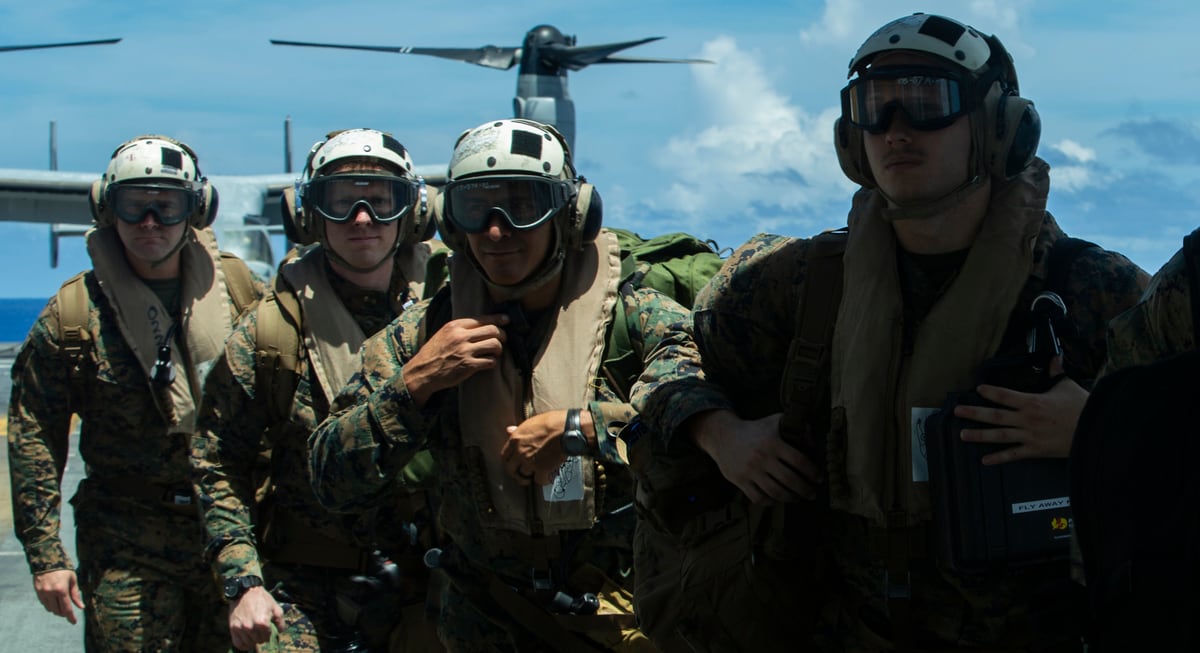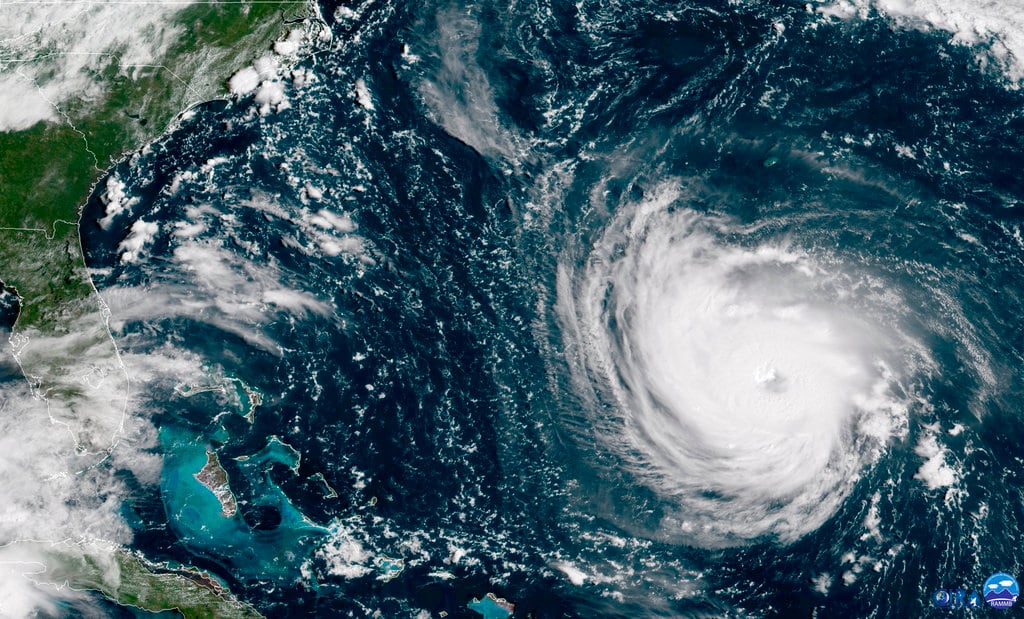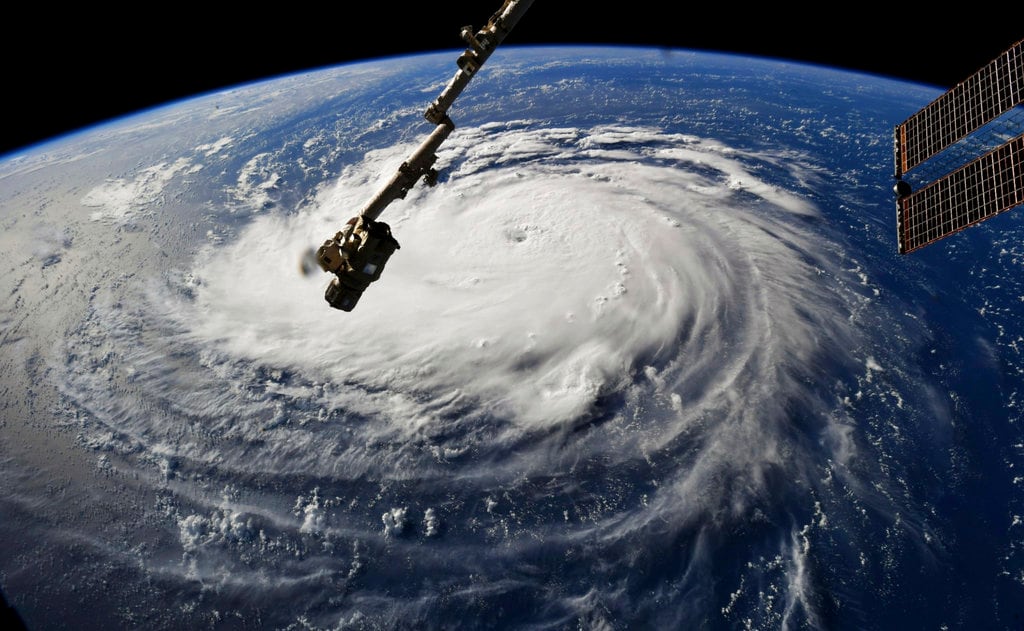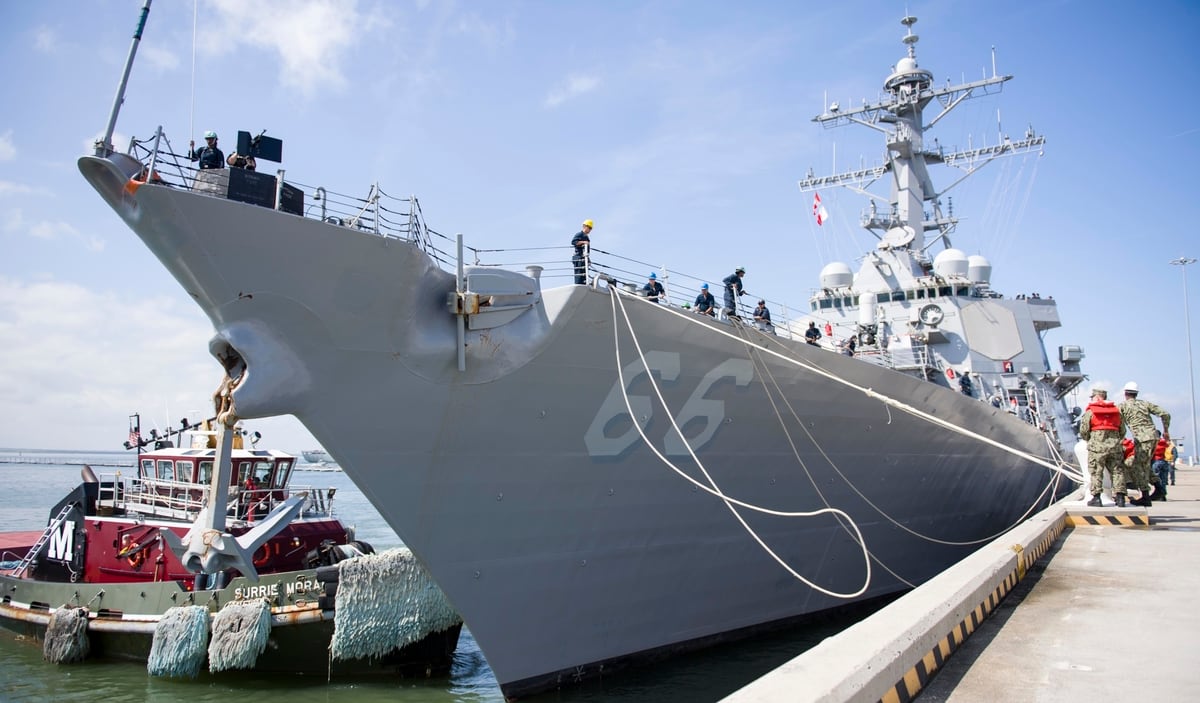HONOLULU — The Navy weathered typhoon Mangkhut after it barreled over the Marshall Islands and Guam on Monday but sailors in Hawaii and along the Virginia coast are bracing for the twin punches of tropical storm Olivia and hurricane Florence.
Marines and sailors with the 31st Marine Expeditionary Unit and the Wasp Expeditionary Strike Group began distributing emergency relief supplies Monday on Guam alongside Federal Emergency Management Agency personnel and local government officials.
About 80 percent of the U.S. territory remains without power and residents confront widespread flooding, the Pacific Daily News reported on Tuesday.
Patrol boats from Coast Guard Station Apra Harbor also began yanking debris from port waters so that it could reopen to military and commercial shipping while crews sped to the Northern Marianas islands of Saipan, Tinian and Rota to assess conditions.
“Reopening the Port of Guam is our top priority,” said Capt. Christopher Chase, commander of Coast Guard Sector Guam in a press release. “We are currently conducting an on-water assessment with a crew aboard our 29-foot Response Boat-Small from Station Apra Harbor, and have multiple teams that are making shore-side and facility assessments. Once these assessments are complete and safe navigation is available to all traffic, we will reopen the ports.”
Although the initial Coast Guard assessment for Guam found “minimal damage to piers and infrastructure,” commanders continue to warn mariners that the waters off the Mariana Islands remain “very dangerous," according to written statements emailed to Navy Times.
But that didn’t stop Navy Rear Adm. Brad Cooper, Marine Col. Robert “Bams” Brodie and Lt. Col. Christopher Johnson from touching down in Rota on Tuesday.
The commanders of Combined Task Force 76, the 31st MEU and Combat Logistics Battalion 31 are working alongside Ralph Torres, the governor of the Northern Mariana Islands, to coordinate the flow of relief supplies.
Rota absorbed the brunt of Mangkhut, which pounded the island with 10 inches of rain winds clocked at 139 miles per hour.
In Hawaii, officials at the U.S. Joint Typhoon Warning Center said that Manghkut had blossomed into a super typhoon, with sustained winds of 150 miles per hour and a wave height estimated now at 39 feet.
Manghkut is less than 300 miles north of Yap and tracking westward toward the Philippines and China.
Tropical cyclones are called “typhoons” west of the International Date Line and “hurricanes” east of the boundary.

Packing maximum sustained winds of 65 miles per hour, Tropical storm Olivia is now about 400 miles east of Pearl Harbor and is expected to reach Oahu on Wednesday.
Although it’s weakening, National Weather Service forecasters warned residents that Olivia might end up being worse than last month’s hurricane Lane, the wettest tropical cyclone in recorded Hawaiian history.
That’s because while Lane deluged Hawaii and caused an estimated $200 million in damages, the eye of the hurricane never got closer than about 110 miles south-southwest of Pearl Harbor.
Olivia will thump the island chain directly, smacking Maui and parts of the Big Island first before whipping Oahu, where meteorologists predict up to 20 inches of rain will fall on the windward side.
The storm surge might crest 15 feet, too.
To escape the surf, the guided-missile destroyer Decatur joined a procession of warships leaving Joint Base Pearl Harbor-Hickam on Monday.
By evening, most Navy vessels had sortied to safe waters far from the Hawaiian coast, Military Times Pentagon Bureau Chief Tara Copp in Honolulu reported.

Similar sorties occurred Monday as nearly 30 vessels began exiting Naval Station Norfolk and Joint Expeditionary Base Little Creek to avoid hurricane Florence.
At Naval Air Station Oceana in Virginia Beach, officials said that about 75 aircraft will begin flying inland on Wednesday, too.
F/A-18 Super Hornet pilots assigned to the “Gladiators” of Strike Fighter Squadron 106, the “Fighting Blacklions” of VFA-103 and the “Pukin' Dogs” from VFA-143 will spearhead the flights, with other Oceana squadrons following them.
Aircraft undergoing maintenance will remain in their hangars, officials said.
Navy Region Mid-Atlantic commander Rear Adm. Charles Rock told Navy Times that several aircraft squadrons are leaving the Norfolk area, too.
The “Dragon Whales” of Helicopter Sea Combat Squadron 28 were part of a wave of more than 100 aircraft departing Hampton Roads, bound for bases in six states unlikely to be threatened by the hurricane, Naval Air Force Atlantic officials announced.
Now Rock’s focusing on his people.
Echoing Virginia Gov. Ralph Northam’s Tuesday evacuation order, Rock has issued emergency departure orders for all active duty and civilian personnel and their families living in Hampton Roads and flood-prone “Zone A” portions of the Tidewater region.
The order will remain in effect until Sept. 16 and includes all troops residing in large stretches of Portsmouth, Chesapeake and the barrier islands jutting into the Atlantic Ocean.
“So far, it’s going very smoothly,” Rock said early Tuesday evening.
He credited that to Northam’s quick and decisive efforts to inform the public about dangers and the very close relationships between the Navy and state and local emergency management agencies.
Rock has authorized all evacuees to move up to 500 miles beyond the designated remote safe have of Asheville, North Carolina. Nestled in the Blue Ridge Mountains, the city is about 450 miles west of where hurricane Florence is expected to make landfall on late Thursday or early Friday.
To speed the flow of families out of the affected communities, Chesapeake officials announced that they’re suspending all tolls on the Route 160 Chesapeake Expressway.
RELATED

The troops leaving the Tidewater region join an exodus of more than 1 million citizens fleeing coastal communities in North and South Carolina and southern Virginia.
The National Hurricane Center in Miami announced late Tuesday morning that Florence is now a Category 4 storm about 900 miles east-southeast of Cape Fear, North Carolina, and is strengthening, with sustained winds near 130 miles per hour.
Meteorologists warn residents that a “life-threatening storm surge” will likely pummel portions of the Carolina and Virginia coastlines, followed by catastrophic flash flooding and hurricane-force winds.
President Donald Trump already has released emergency disaster funds for those states, plus Maryland and Washington.
Forecasts call for seven-day rainfall totals of up to 30 inches deluging much of North Carolina and Virginia.

Rock said that’s what he’s most worried about. He pointed to Isabel, the devastating 2003 hurricane that punished the Mid-Atlantic states, killing 36 people and causing $1.85 billion in damage.
“It put a lot of water here on the ground,” Rock said.
That’s why his crews toiled throughout Tuesday inspected storm drains, prepping sandbags and moving automobiles out of areas likely to flood.
With sailors and their families too young to remember the devastation from 15 years ago in mind, Rock urged them to “take this storm very seriously.”
“If you’re ordered to evacuate, please heed the warning,” he said. “If you’re outside the affected areas, stay in a safe place.”
Rock’s command will use the social media to update weather conditions, announce new rounds of evacuations or list the locations of public shelters for those who stay in the hurricane’s path.
Officials also will link sailors and their families to agencies and nonprofits that can help them through the looming disaster.
“We don’t want anyone scratching their heads, wondering what to do next,” Rock said.
Tara Copp is a Pentagon correspondent for the Associated Press. She was previously Pentagon bureau chief for Sightline Media Group.
Prine came to Navy Times after stints at the San Diego Union-Tribune and Pittsburgh Tribune-Review. He served in the Marine Corps and the Pennsylvania Army National Guard. His awards include the Joseph Galloway Award for Distinguished Reporting on the military, a first prize from Investigative Reporters & Editors and the Combat Infantryman Badge.





